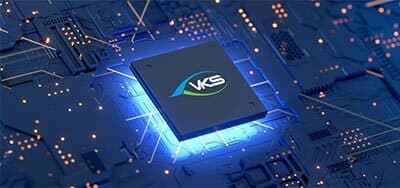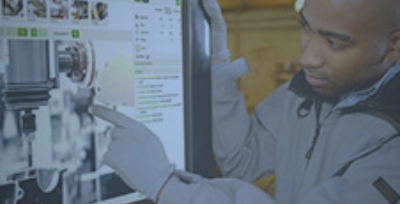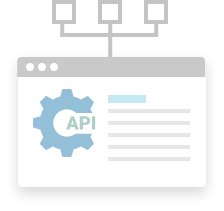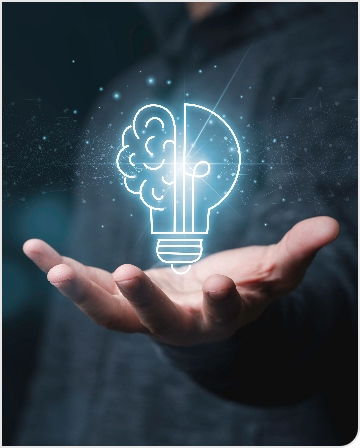AI Manufacturing Technologies
While Artificial Intelligence is an expansive topic, AI manufacturing technologies revolve around three core technologies. These three fundamental AI technologies allow companies to use various software and machines to enhance their manufacturing operations.
Machine Learning
Machine learning is a set of codes and algorithms that processes data and discovers or learns underlying patterns within the data. The machine or software then uses what it has learned heuristically to implement actions that it was never programmed to do, enabling machines to learn by experience and perform the actions without human involvement.
For instance, an AI application can be given a specific goal such as monitoring and reducing bottlenecks within a production line. The AI application can then use machine learning to predict potential bottlenecks and even suggest methods to reduce the effects of the bottleneck.
Deep Learning
Deep Learning takes machine learning a step further by using artificial neural networks to learn from large amounts of typically unstructured data. The process closely mimics the human brain's neural pathways, gradually deciphering and transforming layers of information into actionable output.
While Machine Learning typically utilizes pre-processed data sorted into tables, Deep Learning can decipher large amounts of unstructured data through multiple interconnected nodes. Each layer of nodes processes the data based on programmed conditions, refining the information until the final result or output is achieved.
Deep learning algorithms perform tasks repeatedly and improve their actions at every interaction, meaning that the more Deep Learning algorithms are allowed to learn, the better they perform.

Autonomous Things (AuT)
Autonomous Things (AuT), or the Internet of Autonomous Things (IoAT), interact with the physical world and accomplish tasks autonomously. Through the power of AI, Autonomous Things are designed to perceive their environment, process information, make decisions, and perform various actions without direct or continuous human involvement.
Common examples of Autonomous Things powered by AI in manufacturing are robots/cobots, self-navigating vehicles, and smart manufacturing IoT devices.
Top 5 Benefits of Generative AI in Manufacturing
AI in manufacturing is currently reshaping the way businesses can benefit from computer processes. Since the first introduction of machines mimicking intelligence back in the 1970s, AI has come a long way and has brought numerous advantages that have made the industry what it is today.
However, as AI advances using next-generation generative models, newer and more advantageous benefits rise to aid the next generation of manufacturers.
1. Gather and Analyze Large Amounts of Data
Every manufacturing operation is a powerhouse of data generation, creating large amounts of data every second. A modern smart factory can generate multiple petabytes of data every week, leading manufacturers to possess large amounts of extremely valuable data.
However, there comes a point when manufacturers are generating more data than they know what to do with.
Using machine learning and deep learning, companies can utilize AI to sift through their data and highlight crucial elements, enabling companies to pay attention to the data that will have the largest impact on improvement or any other specified goal.
AI-powered analytics enables manufacturers to detect trends across multiple factors such as productivity, quality, spending, and more.
2. Predictive Maintenance
Traditionally, machine maintenance is preventative. Workers have a predefined schedule that plans for maintenance downtimes based on minimum requirements. However, these schedules are far from perfect. There is no way to know what the machine needs until the machine stops working and downtime occurs.
AI enables manufacturers to gain an inside view of their machines while the machine is working. By tapping into IoT sensors placed within the machine or production line, AI algorithms collect data and search for equipment problems or inefficiencies that will affect production or cause unplanned downtime.
Predictive maintenance AI in manufacturing works to remove unscheduled downtime, optimize machine maintenance windows, and ensure the health and longevity of your machinery.
3. Intelligent Automation
Automated robots and machines have been a mainstay of the manufacturing industry since the 3rd industrial revolution, performing repetitive tasks with high precision and accuracy. However, the machines were unresponsive to their environment, meaning that the robots could not adapt to changes or react to other moving parts beyond the robot’s perception.
AI-powered robots analyze and respond to various factors within the manufacturing environment. Sensors tell the machine when people or other obstacles are in its way while advanced algorithms find optimal systems and paths to increase efficiency and accuracy.
4. Mitigation of Wasted Energy
Using deep learning models, AI-powered systems can monitor manufacturing operations to identify and pinpoint areas that produce waste and energy inefficiencies. After it has observed and gathered enough data, this AI technology will also recommend solutions tailored to the environment it has been observing.
The best part is that the more the AI-powered system continues to review and identify issues, the more acquainted it becomes with the environment, leading the system to find more impactful solutions over time.
5. AI Removes the Language Barrier
The manufacturing industry has progressively grown into a global network. With supply chains that cross oceans and companies with multiple sites in disparate countries, coherent and effective communication are more essential than ever before.
Our work instruction software uses advanced language AI to help companies automatically translate their work instructions instantly. This capability enables manufacturers to communicate and work instruction software uses advanced language AI, regardless of language.
Will AI Replace Humans in Manufacturing?
Although the future is always uncertain, the answer is no, AI is not coming to replace humans… But it will progressively change the industry.
From automated machines that perform tasks based on real-time observations to self-governing systems that quickly detect trends and conditions, AI technology will continue to challenge how we produce items, analyze data, and accomplish our daily manufacturing tasks.
There are many reasons to be excited about the possibilities of AI-powered technologies, especially in light of how valuable human intelligence is to the industry. People can adapt, think critically, and problem-solve with incredible speed and intuition, and there is little indication that AI is anywhere near that level of complexity.
For this reason, an Industry 5.0 approach is crucial, where humans and artificial intelligence work together in harmony.










